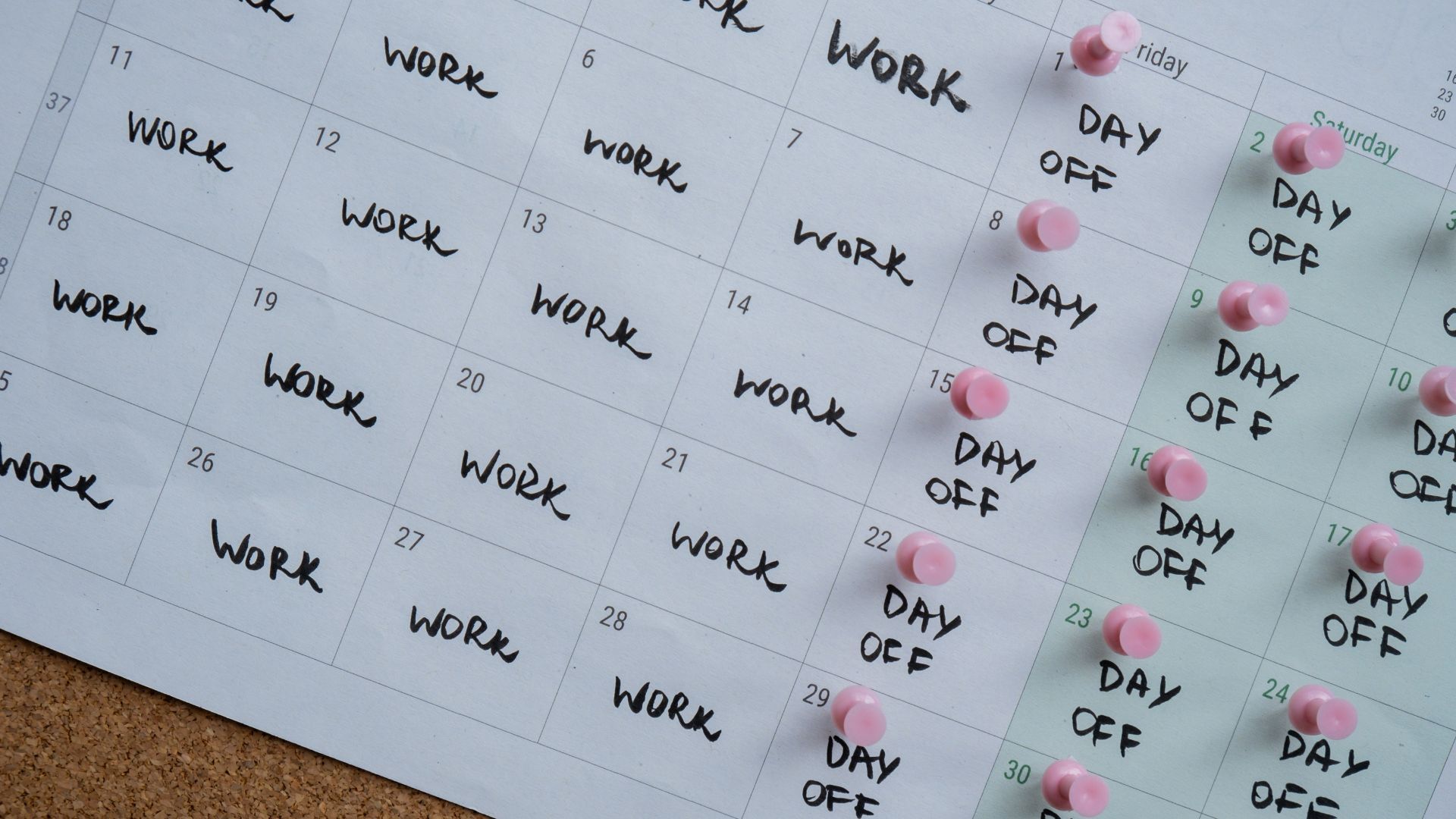Debunking the myths about a four-day workweek in Australia

The conversation around the four-day workweek has gained significant traction in recent years, with businesses and employees alike exploring whether this alternative work model could lead to increased productivity, better work-life balance, and improved employee wellbeing. Internationally, several trials have demonstrated positive outcomes.
A UK-based study found that 92% of companies that trialled a four-day workweek decided to continue with the model, citing higher productivity and employee satisfaction. Similarly, in Iceland, a large-scale trial resulted in a significant increase in work-life balance and no drop in productivity, leading to permanent policy changes in many workplaces.
In Australia, however, the transition has been slower. While some businesses have experimented with the four-day workweek, concerns around feasibility, productivity, and industry-specific challenges persist. A recent survey found that 76.6% of respondents believe more employers will shift to a four-day workweek in the near future, but questions remain about how it would work in practice.
To explore this further, Ben Wheeler, Queensland Managing Director at people2people, sat down with Christian Miran, Work Revolution Architect at Thrive Nation, to discuss the four-day workweek, its challenges, and how businesses can approach its implementation.
"Organisations need to rethink how they work if they want to maintain productivity"
With workforce expectations changing and productivity stagnating, organisations are searching for new ways to drive efficiency while improving employee wellbeing. According to Miran, businesses are now seriously considering alternatives to the traditional five-day workweek.
"Globally, burnout rates are rising, and economic challenges are adding more stress to employees. Organisations need to rethink how they work if they want to maintain productivity," he explained.
One of the key drivers behind this shift is the decline in labour productivity growth over the past two decades. Miran pointed out that as businesses face increased pressure to remain competitive, they must explore new ways to structure work that benefit both employees and employers.
"The productivity growth chart has been on a downward trend for 20 years. If we want to reverse that, we need to rethink the way we work," he added.
Miran shared insights from a four-day workweek pilot he implemented at Medibank. Unlike compressed work schedules where employees work longer hours over fewer days, this model allowed employees to receive 100% of their pay for 80% of their time—provided they maintained 100% productivity.
"It wasn’t about cramming more work into fewer days. Instead, we told employees that if they completed their tasks and business goals were met, they would earn the extra time off," Miran explained.
The results were impressive. Employees reported a 30% improvement in sleep, a 16% boost in overall health, and an 18% improvement in eating habits. Medibank also saw increased employee engagement and retention, proving that shorter workweeks could be beneficial on multiple levels.
Of course, implementing such a shift was not without its challenges. Businesses often worry about productivity loss, and Miran acknowledged that leadership teams were initially sceptical.
"For CEOs and executives, the biggest concern is always: will we maintain productivity? That’s why we framed it as an experiment first, tracking performance at every stage," he said.
As discussions around the four-day workweek gain momentum, Australian businesses must decide whether this shift is right for them. While challenges exist, real-world trials show that workplaces willing to innovate can reap substantial benefits in employee wellbeing, engagement, and efficiency.
The future of work is evolving, and companies that embrace flexibility and rethink outdated models may have a competitive advantage in attracting and retaining top talent.
Could your business benefit from a four-day workweek? Now is the time to start the conversation.
Debunking the myths around a four-day workweek
There are several misconceptions that hold businesses back from trialling a four-day workweek. Miran addressed three key myths:
“Employees will get less done in fewer hours.”
Productivity isn’t about how much work is done but how effectively it's completed. Miran noted that many workplace cultures prioritise being busy rather than achieving meaningful results.
"It’s not about how many meetings you attend or how many emails you send—it’s about what actually moves the business forward," he said.
“It only works for certain industries.”
While some believe this model is only suitable for corporate jobs, trials have shown success across manufacturing, healthcare, and even law enforcement.
"Lamborghini, a US police force, and hospitals have all tested the four-day workweek. The results show this isn’t just for office workers—it can apply across industries," Miran explained.
“Employees should be motivated enough without needing an extra day off.”
Rest and recovery enhance productivity, creativity, and overall job performance. Miran argued that giving employees time to recharge actually improves output.
"This isn’t about motivation—it’s about recognising that well-rested employees perform better," he added.
How can businesses approach a four-day workweek?
For organisations considering a shift to a shorter workweek, the key is experimentation and adaptation. Miran advised companies to take small steps before making long-term commitments.
Identify areas for efficiency improvements.
Businesses must determine where they can streamline processes to free up time without compromising performance. Leaders should assess unnecessary meetings, redundant approval processes, and inefficient workflows.
Test small changes first.
Rather than immediately shifting to a four-day workweek, companies can start with shorter workdays, early finishes, or additional break time. If productivity remains stable or improves, the organisation can gradually scale the change.
Engage employees in the process.
Employees should be part of discussions to identify pain points and opportunities. A culture of collaboration and open feedback will ensure smoother transitions.
Track performance metrics.
Businesses need clear KPIs to evaluate the success of a four-day model, including productivity, revenue, employee satisfaction, and retention rates.
Find the job you love I Find the right talent
Get in touch with people2people
Australia
I
United Kingdom
In business since 2002 in Australia, NZ, and the United Kingdom, people2people is an award-winning recruitment agency with people at our heart. With over 12 offices, we specialise in accounting and finance, business support, education, executive, government, HR, legal, marketing and digital, property, sales, supply chain, and technology sectors. As the proud recipients of the 2024 Outstanding Large Agency and Excellence in Candidate Care Awards, we are dedicated to helping businesses achieve success through a people-first approach.
Recent articles





Latest Media Features
List of Services
-
Dry promotions': Australian employees given new titles with no pay hikeDry promotions': Australian employees given new titles with no pay hike
Human Resources Director
Janurary 10, 2025 -
People2people Recruitment Reveals Top 25 Career Tips for 2025People2people Recruitment Reveals Top 25 Career Tips for 2025
Global Travel Media
Janurary 6, 2025 -
Navigating 2025: Top tips for evolving Australia jobsNavigating 2025: Top tips for evolving Australia jobs
IT Brief Australia
Janurary 1, 2025
List of Services
-
Dry promotions': Australian employees given new titles with no pay hikeDry promotions': Australian employees given new titles with no pay hike
-
People2people Recruitment Reveals Top 25 Career Tips for 2025People2people Recruitment Reveals Top 25 Career Tips for 2025
-
Navigating 2025: Top tips for evolving Australia jobsNavigating 2025: Top tips for evolving Australia jobs
Get in touch
Find out more by contacting one of our specialisat recruitment consultants across Australia, New Zealand, and the United Kingdom.
Copyright © 2025, people2people
people2people acknowledges the Traditional Custodians of country, pays respect to their Elders past and present, and extends that respect to all Aboriginal, Torres Strait Islander and Māori peoples today.
people2people partners with CarbonInvoice to measure and mitigate any carbon emissions associated with the work we do.
Specialisations
Locations
Resources

